Books We Trust: The Collaborative Organization by Jacob Morgan
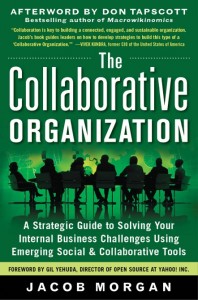 This is number 11 in a series called Books We Trust.
This is number 11 in a series called Books We Trust.
I first met Jacob Morgan a little over a year ago in New York. Appropriately, we had first met on Twitter, then agreed to a coffee on an East Coast trip of his that coincided with a free midday on my end. Lucky for me!
What’s unique about Jacob is the extent to which he intuitively grasps how new digital tools and strategies can be used to create Collaborative Organizations where employees share, connect and engage with each other and with information. This in turn helps build trust, fosters collaboration and positively impact the lives of employees both at and outside of work.
Most of us “get” that collaboration – whatever that means – is a powerful force in today’s networked business world. Unlike most of us, Jacob “gets” just what that does mean. That’s what his book is about.
Charlie Green: Jacob, you’re so modest. I honestly did not know, until I saw the draft the number of interesting people you connected with in writing this book: Don Tapscott, Gil Yehuda, Craig Newmark, Darren Entwistle – and I’m just scratching the surface. How did you gain entrée to all these interesting folks?
Jacob Morgan: I’ve been very fortunate to get such amazing people involved. The former CIO of the USA (Vivek Kundra) was the closest I could get to the President himself endorsing the book! As soon as I had something I could share with people I immediately began reaching out to leaders who I thought would make great supporters of the book.
These leaders themselves believe in the concept of a Collaborative Organization so the book really resonated with them. I had relationships at many of the companies who were able to help make this happen; without them, none of this would have been possible.
Charlie: You spent a month traveling throughout China, including rural areas, and were amazed at how easy it was to stay digitally connected. Easier, in fact, than inside some major US corporations. The corporate use of technologies lags the social uses that are developing outside the walls. What’s up with that?
Jacob: The barrier for individual use of social media is non-existent. All you need is an internet connection. For corporate-led collaboration initiatives to take place, all sorts of things need to be considered: cost, security, risks, employee adoption issues, vendor selection, integrations and customizations and more. Realistically many companies are still trying to figure out what it all means and how it can be applied to their business. There is also a high degree of fear.
Charlie: We often hear people – let’s say mainly from my generation – who bemoan the lack of depth in relationships that comes about from the “shallowness” of social media connections. In contrast, you point out that in 1977, an MIT researcher found that people working 30 yards apart from each other interacted as well as people half a world away.
The problem this raises is not what came to be called strong ties, but rather one of weak ties. The power of weak ties to extend functional work relationships, you point out, is revolutionary and massive. Say a bit more about that please?
Jacob: The study showed that if you’re more than 30 meters away from someone, you might as well be in another city. Beyond 30 meters, collaboration and communication drop off significantly.
Weak ties act like bridges between groups or areas. Think of Oakland and San Francisco. Each can be considered a strong community with a lot of strong ties. But the Bay Bridge, which connects the two, allows people from San Francisco to go to a new area, Oakland, and vice versa.
The same is true within companies. People with strong ties typically know the same group of people; it’s an overlap, it can lead to staleness, which is why we need to extend beyond our networks. This we do through weak ties.
How often were you able to get a job interview, access to a party, a discount on something, or an introduction to someone based on a weak tie? LinkedIn is a great example of a platform that allows you to build weak ties in the business world that you can potentially call on later.
Charlie: It’s my sense that many people in business think of collaborative tools with the paradigm of sharing databases, as a problem of knowledge management, powerful queries and the like. But you caught my attention with three items right out of my own books: thinking out loud, listening and remote team trust-building.
These are core skills for human-to-human trust creation; how in the world can bloodless abstract digital tools help us to connect in these powerfully human ways?
Jacob: Keep in mind that technologies are simply the enablers; it’s still people that are using these tools and engaging with each other. These tools allow us to share information in new ways; the same is true for listening.
We can have a pulse on the company by checking out a corporate activity feed, or sharing an idea or a challenge that we’re trying to figure out. This happens often in the consumer space with Facebook and Twitter – again, it’s the corporate world that lags.
As far as trust goes, we tend to trust people with whom we have something in common. These new collaborative tools allow us to form communities of interest, passion and expertise that help employees build relationships, and hence trust with one another.
Charlie: One of the several rich case studies you describe was for a 1500-employee group at Penn State that created an intranet. What struck me was that the plan for implementation and adoption was to take 3-5 years. In fact, it was done in 1.5 to 2 years. And – wait for it – you say there was never an in-depth strategy for doing this.
What was the secret sauce that pulled that one off?
Jacob: No two companies go down the same path. Penn State planned quite conservatively for their initiative but even they were surprised by the faster adoption.
I can’t say there was a secret sauce per se, but I do know that they really cared about this initiative and they made it front and center. Though they didn’t have an in-depth strategy, they did have some foundation laid out for what they wanted to do.
It’s a bit like trying to become a great swimmer by studying YouTube videos, reading books, and interviewing the greatest swimmers. Sure, it’ll you give you some tips and ideas, but at the end of the day you need to jump in the water to learn and adapt.
Is this the best approach for every company out there? Probably not, but it can certainly work for some, as Penn State has shown.
Charlie: You talk about the risks of implementing new collaborative technologies, but also about the risks of not implementing them. What are the biggest of those latter risks, the risks of not taking a risk?
Jacob: I’d say some of the top risks are:
- Having a disengaged workforce that doesn’t care much about the work they do or the company they work for
- Inability of the company to stay competitive
- Having an inefficient workforce
Charlie: Jacob, I’m totally sold that an organization using these technologies fluently could become enormously successful. If you had to narrow down the top two or three barriers to acceptance of them, what would you say they are?
Jacob: There are three types of resistance: they come from employees, managers, and IT. Respectively:
The top employee barriers are not wanting to learn a new technology, and saying they don’t have enough time.
The leading managerial barriers are not seeing it as a priority (which I believe is a fear and a lack of understanding problem), and uncertainty about the overall business value and ROI.
For IT, the top barriers are low prioritization (again, often due to fear and understanding), security issues, and lack of budget.
Charlie: The full title of the book is The Collaborative Organization: A Strategic Guide to Using Emerging Social and Collaborative Tools, and it just formally came out on July 9th. I hope you sell a boatload of books. Thank you for sharing your thoughts with us here.
Jacob: My pleasure, thanks Charlie!

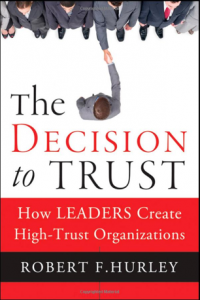 This is the eighth in a series called
This is the eighth in a series called 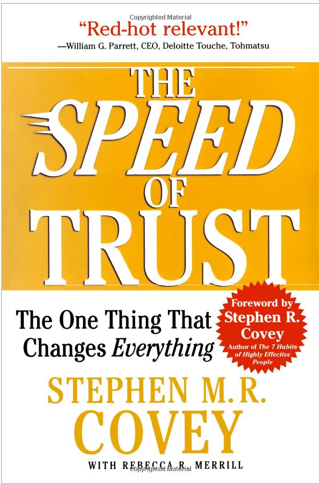 This is a special edition of
This is a special edition of 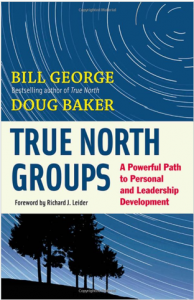 This is the seventh in a series called
This is the seventh in a series called 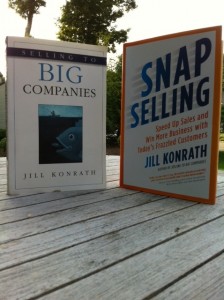
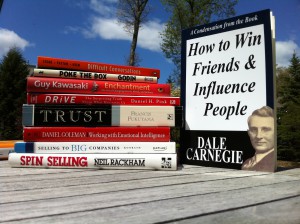 This is the first in a new series called Books We Trust. We expect to publish it irregularly, but about monthly.
This is the first in a new series called Books We Trust. We expect to publish it irregularly, but about monthly.